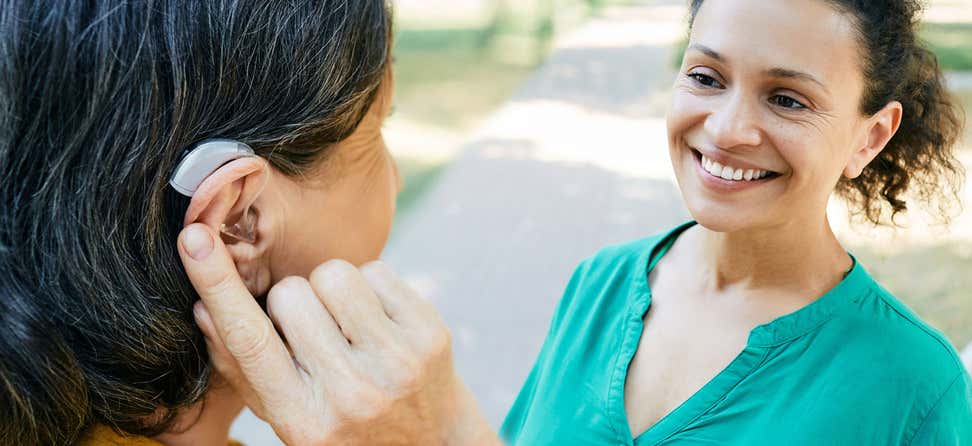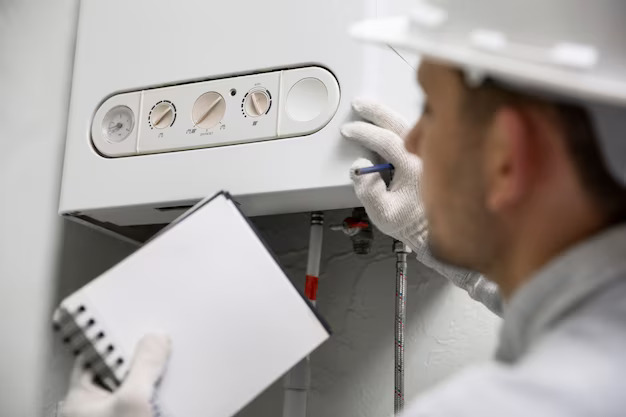Living with hearing impairment can pose unique challenges, affecting one’s ability to communicate effectively and engage with the world. Fortunately, advancements in technology have led to the development of hearing aids, powerful devices designed to improve auditory experiences and enhance overall well-being. In this comprehensive guide, we will explore the world of hearing aids, covering everything from types and features to maintenance tips, to help you lead a comfortable and fulfilling life.
Understanding Hearing Loss
Before delving into the world of hearing aids, it’s essential to grasp the different types and causes of hearing loss. From age-related hearing loss to noise-induced damage, understanding the root of the issue is crucial in determining the most suitable hearing aid solution.
Types of Hearing Aids
Hearing aids come in various types, each designed to cater to different degrees of hearing loss, personal preferences, and lifestyle needs. Understanding the characteristics of each type can help individuals make informed decisions when choosing the most suitable hearing aid. Here are some common types of hearing aids:
Behind-the-Ear (BTE):
BTE hearing aids rest behind or on top of the ear and are connected to a custom earpiece via tubing or a thin wire.
- Suitable for a wide range of hearing loss.
- Easy to handle and clean.
- Larger size allows for additional features and longer battery life.
In-the-Ear (ITE):
ITE hearing aids are custom-made to fit within the outer ear, filling the bowl-shaped area.
- More discreet than BTE models.
- Larger size allows for additional features.
- Easy to insert and remove.
In-the-Canal (ITC):
ITC hearing aids are smaller than ITE models, fitting partially into the ear canal.
- Less visible than ITE and BTE models.
- Comfortable and discreet.
- Suitable for mild to moderate hearing loss.
Completely-in-the-Canal (CIC):
CIC hearing aids are the smallest, fitting entirely within the ear canal.
- Virtually invisible.
- Less wind noise due to placement in the ear canal.
- Suitable for mild to moderate hearing loss.
Receiver-in-Canal (RIC) or Receiver-in-the-Ear (RITE):
RIC/RITE hearing aids have a small, discreet housing behind the ear, connected to the earpiece via a wire.
- Comfortable and discreet.
- Open-fit design reduces the “plugged” feeling.
- Suitable for mild to moderate hearing loss.
Bone-Anchored Hearing Aids (BAHA):
BAHA devices are surgically implanted and work by transmitting sound vibrations through the skull bone.
- Suitable for individuals with conductive hearing loss or single-sided deafness.
- Comfortable for those with ear canal issues.
Disposable and Invisible Hearing Aids:
Some hearing aids are designed to be disposable, with a limited lifespan. Invisible hearing aids, such as Lyric, are placed deep in the ear canal and can be worn for months at a time.
- Convenient for those who prefer minimal maintenance.
- Invisible models offer maximum discretion.
Choosing the right type of Hearing aids Fuengirola depends on factors such as the severity of hearing loss, lifestyle, and personal preferences. Consulting with a hearing healthcare professional can provide valuable guidance in selecting the most appropriate device for individual needs.
Features to Consider
Modern hearing aids are equipped with an array of features designed to provide a customized and comfortable listening experience. From noise reduction and directional microphones to telecoil technology, understanding these features will empower you to choose the right device for your specific needs.
1. Directional Microphones:
These microphones focus on specific directions, reducing background noise for enhanced speech clarity. This feature improves understanding in noisy environments, providing increased comfort during conversations.
2. Noise Reduction Technology:
Advanced algorithms identify and minimize unwanted background noise, resulting in a clearer auditory experience. This feature ensures a more focused perception of speech and increased comfort by reducing the impact of environmental noise.
3. Telecoil (T-Coil) Technology:
Telecoils facilitate wireless connectivity to devices like phones and public address systems. Clearer phone conversations without interference and improved accessibility in looped venues are notable advantages.
4. Bluetooth Connectivity:
Bluetooth-enabled hearing aids allow seamless integration with smartphones and compatible devices, offering direct audio streaming. This enhances convenience for hands-free communication and media streaming.
5. Rechargeable Batteries:
Hearing aids with rechargeable batteries eliminate frequent replacements, providing a cost-effective and eco-friendly power solution. This feature enhances convenience and reduces environmental impact by minimizing disposable battery use.
Adjusting to Hearing Aids
Adapting to life with hearing aids involves a transition period. We’ll discuss practical tips and strategies to make this adjustment smoother, addressing common challenges such as proper fit, volume control, and overall comfort.
1. Give Yourself Time:
Adjusting to hearing aids is a gradual process. Be patient with yourself as you acclimate to the new sounds.
- Start by wearing them for short periods, gradually increasing the time.
- Practice in quieter environments before tackling noisy settings.
2. Understand the Settings:
Familiarize yourself with the different settings on your hearing aids to optimize performance in various environments.
- Learn how to adjust volume levels and switch between programs.
- Work with your audiologist to program settings tailored to your specific needs.
3. Address Discomfort:
It’s normal to experience initial discomfort or sensations. Identifying and addressing these issues is essential for long-term wear.
- Ensure the hearing aids fit properly; consult your audiologist for adjustments.
- Gradually increase wearing time to allow your ears to adapt.
4. Practice Listening Skills:
Rebuilding listening skills is part of the adjustment process. Practice focused listening to improve comprehension.
- Engage in one-on-one conversations to enhance speech understanding.
- Gradually introduce yourself to group settings to improve auditory processing.
5. Seek Support:
Transitioning to hearing aids can be emotional. Seek support from friends, family, or hearing aid support groups.
- Share your experiences and feelings with loved ones.
- Attend support groups or connect with others who have gone through a similar adjustment.
6. Regular Follow-ups with Audiologist:
Schedule regular appointments with your audiologist for adjustments and check-ups.
- Communicate any challenges or concerns during follow-up visits.
- Keep your audiologist informed about your overall experience for ongoing fine-tuning.
Maintenance and Care
To ensure the longevity and effectiveness of your hearing aids, proper maintenance is crucial. This section will cover essential care practices, including cleaning routines, battery replacement, and regular check-ups with a hearing healthcare professional.
1. Clean Regularly:
Maintaining the cleanliness of your hearing aids is crucial for optimal performance. Over time, earwax and debris can accumulate on the exterior, potentially affecting the device’s functionality. To keep your hearing aids in top condition, use a soft, dry cloth to gently wipe away any surface residue. Additionally, employ a cleaning brush specifically designed for hearing aids to delicately remove wax from microphone ports and vents. This regular cleaning routine helps prevent blockages and ensures that your hearing aids deliver clear and reliable sound.
2. Handle with Clean Hands:
Maintaining clean hands when handling your hearing aids is essential to prevent the transfer of dirt and grime that could impact their performance. Always wash your hands thoroughly before touching your devices. When handling the hearing aids, use a clean, dry cloth to minimize the risk of introducing contaminants. This simple practice helps preserve the cleanliness of your devices and ensures a longer lifespan.
3. Store Properly:
Proper storage is key to protecting your hearing aids from damage and preserving their functionality. When not in use, place your devices in a protective case to shield them from potential harm. Additionally, be mindful of the environment in which you store your hearing aids, keeping them away from excessive heat and moisture. By adopting these storage practices, you contribute to the longevity and reliability of your hearing aids.
4. Change Batteries Promptly:
Timely battery changes are crucial to maintaining consistent performance and preventing unexpected shutdowns. Keep spare batteries on hand, and replace them as soon as you notice a decrease in power. Regular monitoring of battery life ensures uninterrupted usage and enhances the overall reliability of your hearing aids.
5. Protect from Moisture:
Shielding your hearing aids from moisture is vital to prevent potential damage. Remove your devices before engaging in activities such as showering or swimming. Consider using a dehumidifier, especially overnight, to absorb any accumulated moisture. These precautions safeguard your hearing aids, extending their lifespan and maintaining their functionality.
Conclusion
Incorporating hearing aids into your life can significantly enhance your overall comfort and quality of life. By understanding the various types, features, and maintenance tips, you can make informed decisions that cater to your unique needs. Embrace the transformative power of hearing aids and embark on a journey towards improved communication and enriched experiences.





